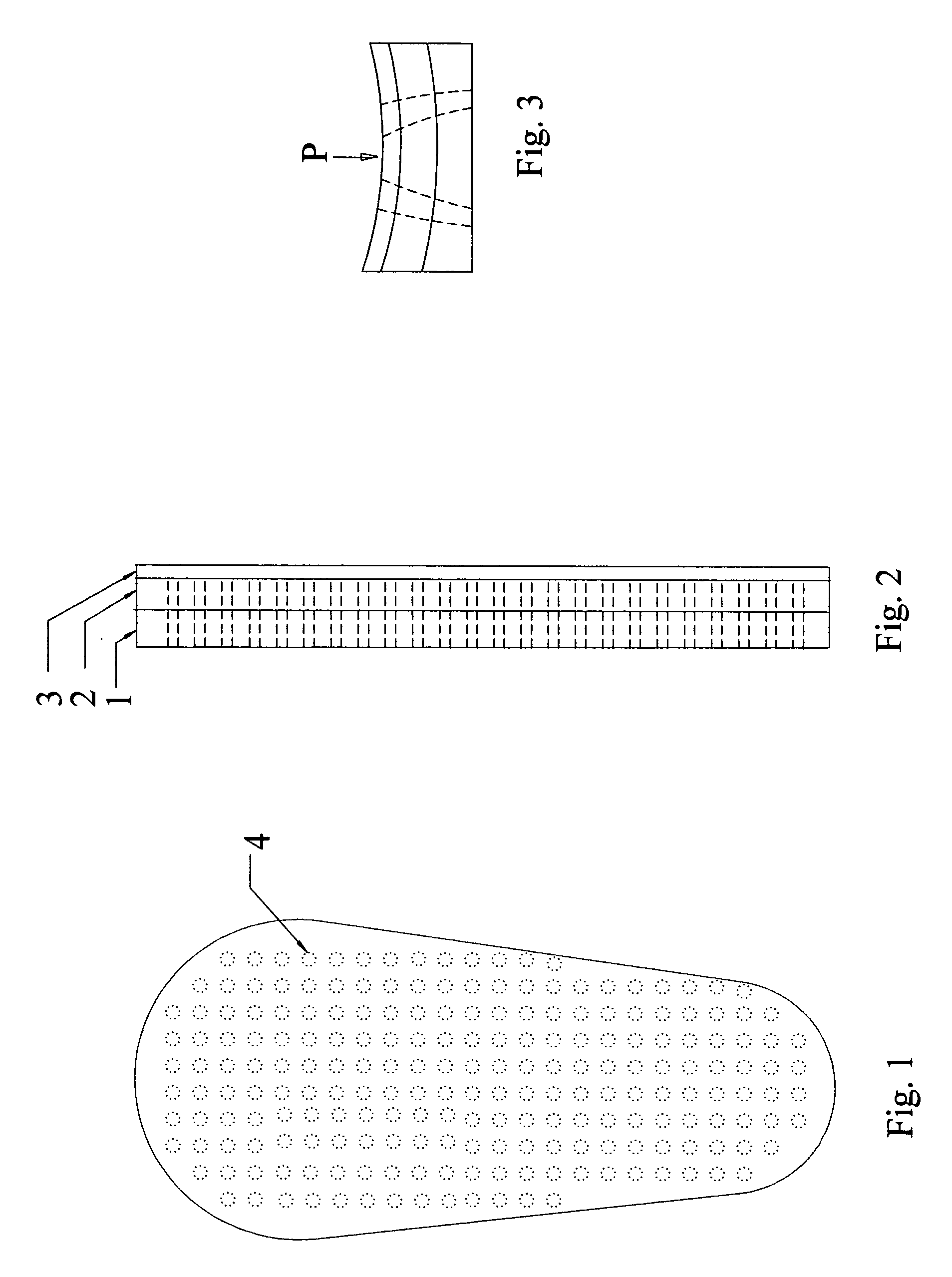Insole to reduce plantar pressure
a plantar pressure and insole technology, applied in the direction of soles, insoles, uppers, etc., can solve the problems of increasing the putting additional pressure around the wound edge, and causing more skin undermining and calluses around the wound, so as to reduce the plantar pressure
- Summary
- Abstract
- Description
- Claims
- Application Information
AI Technical Summary
Benefits of technology
Problems solved by technology
Method used
Image
Examples
Embodiment Construction
[0023] This invention of the off-loading insole for diabetic ulceration consists of a shock absorbing composite layers insole, which also has additional capability to reduce the peak plantar foot pressure and shear stress on the plantar skin by evenly spaced 3 / 16″ diameter holes through only the bottom 2 layers of the insole. These holes are ½″ away from each other in square patterns. See FIG. 1, and FIG. 2.
[0024] The insole main shape can be of a foot, existing shoe insole, or the outline of a post surgical shoe or removable cast walker.
[0025] The bottom layer 1 material is soft EVA with a thickness of ¼″ which has excellent shock absorption, high direct impact performance, and high resiliency.
[0026] The middle layer 2 material can be either pink Plastazote with a thickness of ¼″ to mainly absorb the direct plantar pressure and to reduce the shearing stress.
[0027] The top layer 3 material is closed cell Neoprene with a thickness of ⅛″ and is used as the top cover for the insole...
PUM
| Property | Measurement | Unit |
|---|---|---|
| diameter | aaaaa | aaaaa |
| thickness | aaaaa | aaaaa |
| shear stress | aaaaa | aaaaa |
Abstract
Description
Claims
Application Information
 Login to View More
Login to View More - R&D
- Intellectual Property
- Life Sciences
- Materials
- Tech Scout
- Unparalleled Data Quality
- Higher Quality Content
- 60% Fewer Hallucinations
Browse by: Latest US Patents, China's latest patents, Technical Efficacy Thesaurus, Application Domain, Technology Topic, Popular Technical Reports.
© 2025 PatSnap. All rights reserved.Legal|Privacy policy|Modern Slavery Act Transparency Statement|Sitemap|About US| Contact US: help@patsnap.com


